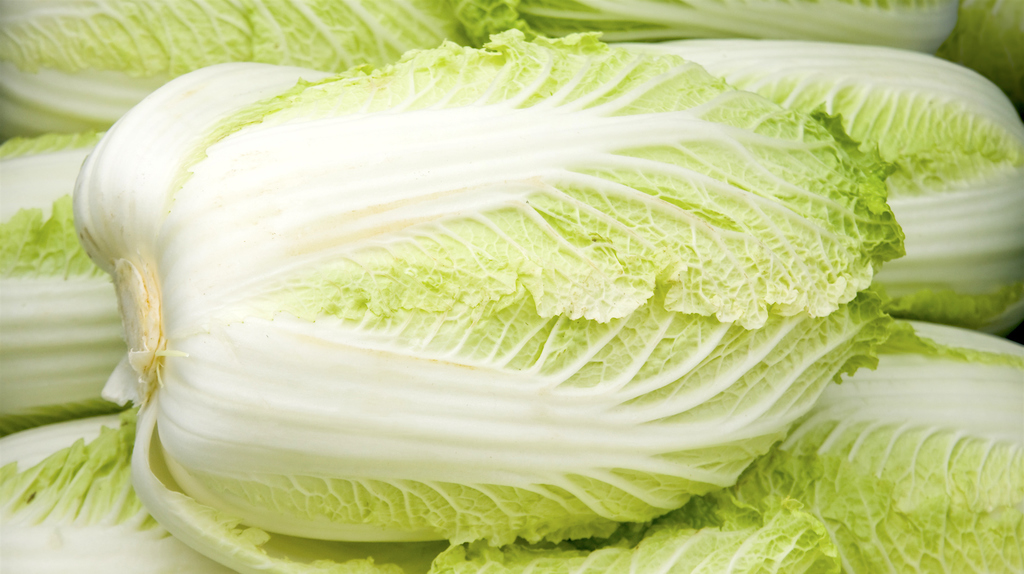
Napa cabbage. A Limuru farmer is cashing in on the rising number of Chinese in Kenya by growing napa, one of their favourite dishes. Photo by SheKnows.
While other people are condemning the swelling population of the Chinese, a Limuru farmer is cashing in on the influx by growing one of the commonest delicacies for these Far East people, the napa cabbage.
A one kilo cabbage head costing about Sh30 in Nairobi at wholesale earns David Muge between Sh60 and Sh70.
The Kiambu farmer opted to turn the growing population of the Chinese in Kenya into an opportunity, to cut into the market that is less penetrated by other farmers.
Although other urbanites consume the napa cabbage, it is an integral vegetable in the delicacy for the Chinese. Apart from the Wakulima and Gikomba market wholesale buyers, Muge delivers orders of the oval cabbage to various Chinese cuisines within Nairobi.
“The common cabbage market is highly competitive especially if one produces after the rains. Cabbages flood the market, and one is forced to sell at low prices. But the napa cabbage does not have a specific time of demand. It is always required,” Muge said.
Before setting foot into this new territory of farming, the farmer carried out a market reach and consultations. The market research helped him identify the Chinese eateries as potential buyers. In the survey, he also got to know contact persons for such eateries.
Besides the Chinese, other people from Asia use the leafy head in preparing salads, soups, rolls, taco toppings, kimchee- a spicy Korean dish-, among other delicacies.
READ ALSO: FACT SHEET: High yielding cabbage variety
READ ALSO: Geneticists trick cabbage pest on to tobacco
READ ALSO: Mombasa paying highest prices for agro-produce
In 2012, he started the farming on one acre, which he has increased to four.
Muge bought a 150g pack from Amiran Kenya at Sh700. It was not available hen in most farm input sores because of its unpopularity among locals.
The propagation of napa is the same as that of the ordinary cabbage varieties.
At an interval of about 14 inches and 25 inches, the farmer transplanted the 15,000 seedlings after two weeks, adding 90kg of DAP to the index-finger deep holes.
Top dressing was later done with another 180kg at various intervals to speed up the leaf and head formation.
Just like the other cabbages, napa was invaded from the tenth week by arphids, diamond-blacked moth caterpillars, among others.
Given that leaves are the target surfaces by the pests, he quickly spayed insecticides and managed to harvest at least 10,000 heads after three months.
Most of the heads weighed two kilos while a few ones were one or three,
Under the best climatic conditions, the napa cabbage can yield up to 40 tons per acre.
In fear of losses due to the first entry into the market with the cabbages, he sold them at an average of Sh35 per head to the locals and Sh50 to the Chinese cuisines.
In the second season of 2013, the farmer harvested 35 tons from one acre, which he sold at a wholesale price of Sh32 per kilogramme. He attributes the ‘better’ performance to better crops husbandry. He grows it twice or thrice a year.
“I call the first season an experiment. I learnt from the shortfalls and kept monitoring the vegetables closely to avoid the losses to the pest. Timely spraying waded off the pests early, and less destruction was done,” Muge said.
Unlike the ordinary cabbages, the napa variety grows upwardly, with the closely packed pale green leaves forming an oval ‘standing’ shape.
This Asian crop is highly susceptible to turnip mosaic, and turnip yellow mosaic viruses. The viruses destroy the leaves, leading to stunted growth, deformed or no head folds.
The sweet, crunchy and celery-flavoured leaves of the napa cabbage make it a delicious salad, and source of roughage for other accompanying foods.
Eating 100g of the cabbage give one at least 45 per cent of the daily vitamin C requirement, according to Nutrition and You, an online nutritional factsheet.